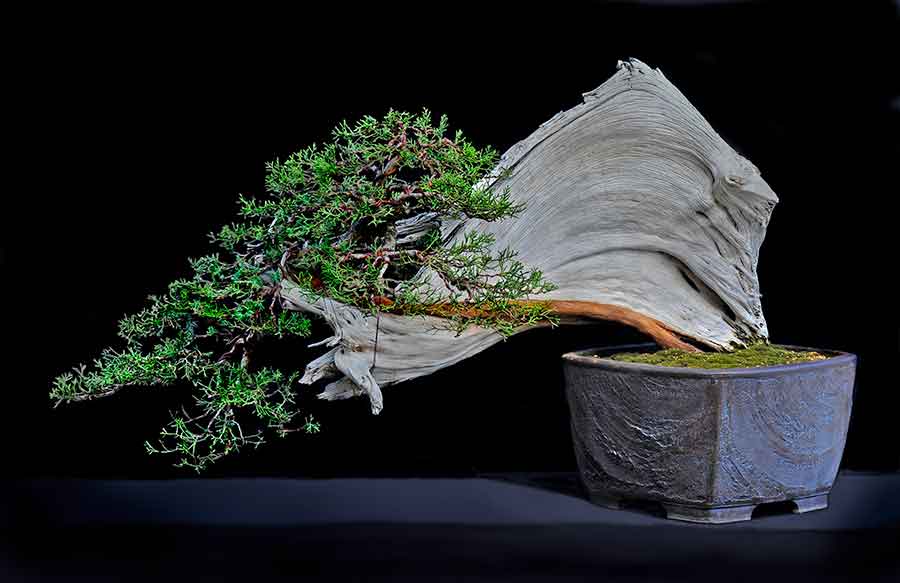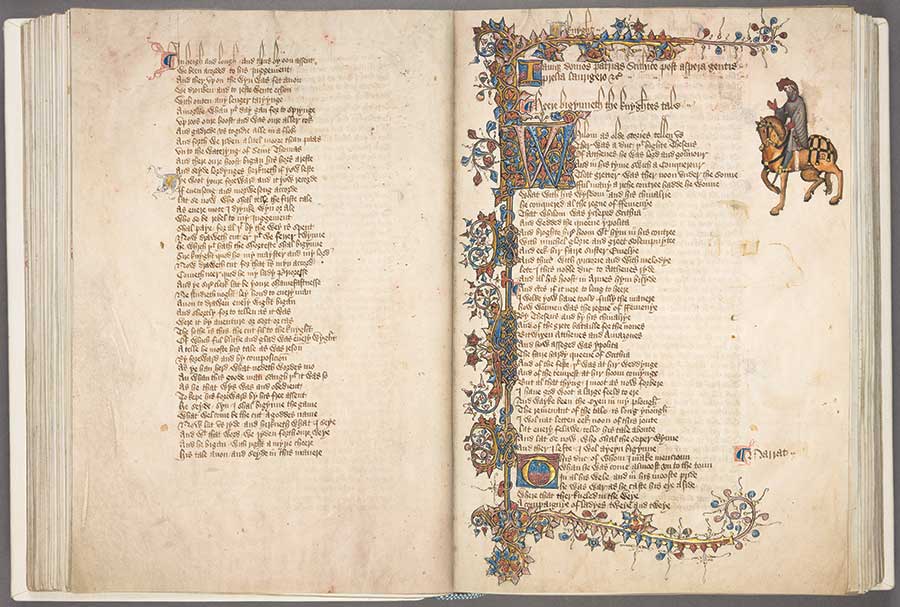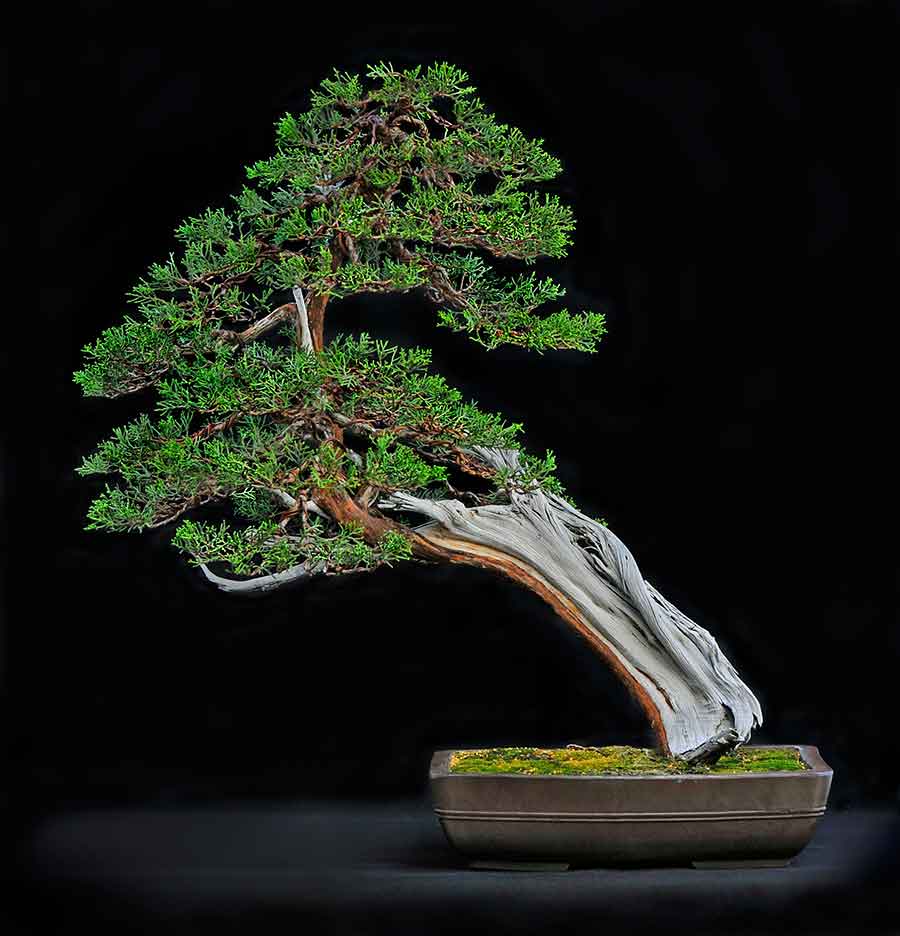The Huntington’s blog takes you behind the scenes for a scholarly view of the collections.
Exploring The Huntington’s Collections Through Bonsai
Posted on Wed., Oct. 14, 2020 by

California juniper (Juniperus californica), Han-kengai or semicascade style bonsai, estimated age of original plant material: 1,500–1,800 years old. Collected from Jawbone Canyon, Mojave Desert and displayed in pot made by Sara Rayner. Collected, styled, and donated by Shig Miya. Photo by Andrew Mitchell. The Huntington Library, Art Museum, and Botanical Gardens.
Visitors can discover an expansive new way to look at miniature trees in "Lifelines/Timelines: Exploring The Huntington's Collections Through Bonsai," on view Oct. 17, 2020 to Jan. 25, 2021. The exhibition asks the question: How do five venerable bonsai trees relate in age and historical significance to masterpieces of literature and art?
Thematically linking works across The Huntington’s broad collections, this interdisciplinary exhibition traces the march of time by comparing the age of selected California juniper bonsai trees to benchmarks in the institution’s 100-year history and to significant pieces in the library and art collections. One bonsai tree and a related didactic display have been positioned outside each of five gallery spaces: the Mapel Orientation Gallery, the Library Exhibition Hall, the Dibner Hall of the History of Science, the Huntington Art Gallery, and the Virginia Steele Scott Galleries of American Art.
“One of the most common questions we get about our bonsai collection at The Huntington is ‘How old is that tree?’” said curator Ted Matson. “In this exhibition, we will not only reveal how we can estimate the ages of some of our oldest bonsai trees, but demonstrate how a lifeline for a tree’s survival builds a timeline into history.”

The age of bonsai specimens on display will be compared to that of rare works in The Huntington's collections, such as the Ellesmere manuscript of Geoffrey Chaucer's The Canterbury Tales, ca. 1400–1410. The Huntington Library, Art Museum, and Botanical Gardens.
While a stylized, miniature tree may have been in cultivation as bonsai for only a few decades, the original plant material from which it was grown is usually much older—often by many centuries. A bonsai artist, searching for a promising specimen from which to style a miniature tree, will often reclaim a nearly dead stump found in nature, coaxing new growth from a withered branch or a slab of trunk in which a living vein of wood, its “lifeline,” still grows. The skeleton-like trunk becomes the foundation—both structurally and aesthetically—for the bonsai’s design. The tree’s lifeline becomes a visual element of the design, as well, and will produce new branches and foliage, trained and shaped under the bonsai artist’s care.
That lifeline can also be used to calculate the tree’s age, Matson explained, in much the same way that the rings in a cross section are counted.
Each of the exhibition's five bonsai installations include an illustrated timeline highlighting three significant items normally on view in the respective gallery. (The galleries themselves currently remain closed.) Flags pinned to ridges in the tree's deadwood indicate how old the plant was when the gallery objects were created. The installation includes interactive elements geared toward children, along with other interpretive materials.

California juniper (Juniperus californica), Shakan or slant style bonsai, estimated age of original plant material: 200–300 years old. Collected from the Mojave Desert and displayed in Tokoname pot from Japan. Donated by Grigsby Cactus Gardens. Photo by Andrew Mitchell. The Huntington Library, Art Museum, and Botanical Gardens.
Originally scheduled for Spring 2020 as one of the keystone events of The Huntington’s yearlong Centennial Celebration, the exhibition had to be postponed because of COVID-19. “A few days after the exhibition’s opening in March, The Huntington closed to visitors,” recalled Matson. “We eventually moved the bonsai back to the nursery.”
Over the summer, the trees outgrew their shapes and were pressing against their wires, which had to be removed to give the trees a rest. During the past two months, the bonsai have been rewired, groomed, and prepped all over again for the upcoming opening. “Thanks to our dedicated bonsai volunteers,” said Matson, “the trees are once again looking their very best for this special exhibition.”
Visitors are also encouraged to self-tour The Huntington’s permanent bonsai collection in the Japanese Garden’s Bonsai Courts, where some 70 masterpiece trees are on public display year-round. And a new display devoted to penjing, the Chinese tradition of miniature trees, can be seen in the expanded Chinese Garden.
The Huntington’s Centennial Celebration is made possible by the generous support of Avery and Andrew Barth, Terri and Jerry Kohl, and Lisa and Tim Sloan.
Lisa Blackburn is senior editor and special projects manager in the Office of Communications and Marketing at The Huntington.